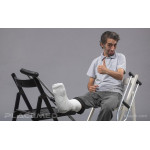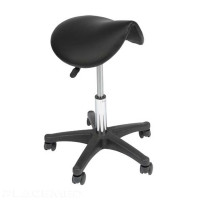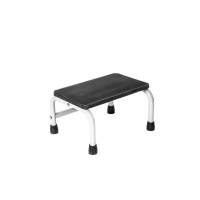Surgical stapler

What is a surgical stapler?
A surgical stapler is a medical device used in surgery to close wounds or join tissues. It works by inserting metal staples, reducing suturing time and minimizing the risk of infection. The surgical stapler is used in a variety of specialties, such as general surgery, cardiovascular surgery, orthopedic surgery, and bariatric surgery.
First designed in the 20th century, the surgical stapler has undergone several advancements, incorporating significant improvements in safety and efficiency. Today, these tools are available in several types, including skin, vascular, and intestinal staplers, each specially designed for a specific surgical application.
Whether for open or laparoscopic surgery, the surgical stapler has revolutionized surgical practices, providing healthcare professionals with a fast and reliable means to close wounds and connect tissues.
What is a staple remover?
A staple remover is a medical device specially designed to remove surgical staples used to close wounds and incisions after a procedure. These precise and convenient tools are essential for ensuring safe and efficient staple removal, thereby minimizing the risk of injury or infection for the patient.
The staple remover is designed with a beak or tip that slides under the staple to gently lift and remove it without causing excessive pain. They are commonly used in a variety of medical settings, ranging from emergency rooms to general medical practices to postoperative services.
Even though the staple remover is a simple tool, its importance in the healing process cannot be underestimated. It contributes to a faster and more comfortable recovery, making staple removal a less traumatic experience for the patient.
What are the types of surgical staplers?
Skin Stapler
Skin staplers are surgical staplers used for closing the skin after surgical procedures, replacing traditional sutures. They offer the advantage of reducing wound closure time and ensuring aesthetically pleasing healing. However, a drawback can be the risk of infection if the staple is not removed in a timely manner.
Vascular Stapler
Vascular staplers are used to connect or occlude blood vessels during cardiovascular procedures. They provide the advantage of minimizing bleeding and ensuring secure connection in a reduced time. The downside could be the higher cost compared to traditional suturing techniques, and specific training is required for their use.
Intestinal Stapler
Intestinal staplers are used in gastrointestinal surgeries to join two sections of the intestine or close an intestinal opening. The advantage lies in the speed and efficiency of stapling, allowing for faster and less painful healing. However, there can be risks of staple line dehiscence or fistula formation if the stapler is not used correctly.
How does a surgical stapler work?
The functioning of a surgical stapler is a perfect blend of technical design and medical precision. Describing the mechanism reveals a delicate and precise process. Upon activation, the stapler pushes the staples out of the cartridge and simultaneously closes them, allowing for secure closure of tissues or vessels.
The staples used in these devices are typically made from biocompatible materials such as stainless steel or titanium to minimize the risk of allergic reactions or infections. Some models use absorbable staples that degrade over time and do not require removal.
The procedure for use varies depending on the type of stapler and the surgical application. However, the general manipulation involves preparing the stapler, precisely aligning the device with the area to be stapled, and activating the stapler to release and close the staples. It is essential for healthcare professionals to be properly trained to use these devices to ensure the effectiveness of stapling and patient safety.
How to choose the right surgical stapler?
It is important to note that the choice of surgical stapler primarily depends on the nature of the surgeries performed by the surgeon and their personal preferences. Each type of stapler has its own advantages and disadvantages and requires appropriate training for optimal use. However, when purchasing a surgical stapler, there are certain criteria to consider, such as:
Material Quality
Staples are typically made of stainless steel or titanium, and in some cases, biodegradable materials. Ensure that the materials are of high quality to minimize the risk of infection or allergic reaction.
Ease of Use
A surgical stapler should be easy to use to ensure optimal precision. Take into account factors such as grip, weight, and ease of staple insertion.
Manufacturer Support
The support and training provided by the manufacturer are also important factors. Ensure that they provide clear and detailed instructions on how to use the device, as well as support in case of any issues.
Budget
While cost is not the most important factor, it is still something to consider. Surgical staplers can vary significantly in price, so it is essential to choose a device that offers a good value for money.
 Francais
Francais 
 Quote
Quote  Cart
Cart 




